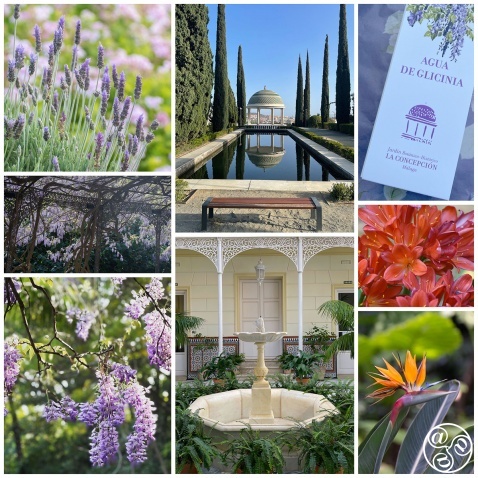
La Concepción Jardín Botánico-Historico de Málaga. The historic botanical gardens of Malaga |
|
Jardines de la Concepcion
From this palatial house, set in a natural landscape setting of fountains and streams, one can enjoy views of the city of Málaga. Three thousand plants grow in two hundred and fifty thousand square kilometres sheltered from the city inside this mid-19th century tropical gallery.
Thanks to the effort and vision of its founders "Finca de la Concepción" will see in the new millenium with 150 years of history, and proud to be one of the most illustrious gardens in Europe.
The gardens were created at the beginning of the 1850's by Amalia Heredia Livermore, granddaughter of an English consul and wife of Jorge Loring, one of the outstanding businessmen of the time. The construction of the railway line between Málaga and Córdoba and the foundation of the newspaper "El Correo de Andalucía (The Andalucian Post) are among his many notable achievements.
The couples tireless travels enable us to appreciate at close hand today a great variety of trees and plants from all corners of the world. In 1943 "La Concepción" was declared a garden of historic and artistic merit and in 1990 it ceased to be private property and passed into the hands of Málaga Town Council. The Council placed Patronato Botánico Municipal "Ciudad de Málaga" in charge of its management.
Although international travel guides have referred to the garden as a definite visit of interest since the turn of the century it only officially opened to the public in 1994.
The gardens "La Concepción" include an authentic tree and plant museum which receives well deserved admiration today while retaining its original hallmark of yesterday. Its flourishing plants attract thousands of birds that flock here to enjoy this natural haven of 400 different tropical and subtropical plants, in emerald countryside where close to 500 palms trees of more than 25 species take the limelight.
To ensure complete coverage of the gardens the management has organized a tour based on 34 areas of interest. Each one is indicated on a placard that includes the plant name, species and origin, making this a well organized and educational tour. Here one will discover native plants from Mexico, India, Java, Australia, China, Japan and Formosa.
Species such as Moraces, Australian trees that stand out for their spurry trunks, and roots that hang from their branches and take root in the soil. The Chilean Palm is also notable as one of the four finest examples of its species in Spain. Chinese orange blossom, privet, young almeces, dwarf palms and south african species such as Bird of Paradise are also to be found. In addition, there is the dwarf date, which is one of the most elegant examples from South East Asia.
On your pilgrimage to nature, trees of enormous dimensions will certainly catch your attention such as the Araucarias, a native species of the Island of Norfolk (Oceanía), which is 45 metres high. There are others, like the renowned Blue Mexican Palm, that, though smaller, are certainly no less beautiful or any less unique.
Finally, there is no better way to round off your visit to these magnificent gardens than by strolling through the Paseo de las Palmeras de Canarias (The Canarian Palm Tree Walk) which leads to the viewpoint and the discovery the unforgettable panorama of Málaga offered from the gardens of La Concepción.
Outside the botanical garden a new route has been developed. Around the World in 80 Trees is an amazing variety of trees from all five continents arranged according to their country of origin. There are 25 from the continent of America, 8 from Africa, 18 from Europe, 17 from Asia, and 12 from Oceania.
The Concepción Gardens are not merely a place to contemplate plants and trees, but are also where experts in environmental education work and organise teachers training courses, primary and secondary school visits, as well as creating environmental awareness campaigns which include reforestation programmes. There is also a workshop where 60 youngsters learn, amongst other things, gardening, nursery skills, the installation of watering systems and masonry skills.
This article was first published in the Andalucia Costa del Sol Magazine in 1996.